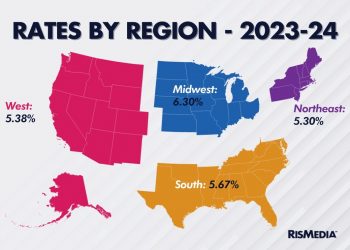 (TNS)—Surely, you’ve heard advice about cutting discretionary expenses—a daily latte, for example—to save money. It’s true that small savings can add up and provide more wiggle room in your budget.
(TNS)—Surely, you’ve heard advice about cutting discretionary expenses—a daily latte, for example—to save money. It’s true that small savings can add up and provide more wiggle room in your budget.
But what about necessary expenditures: the bills you have to pay each month?
Chances are you’re paying a lot more for food, utilities and insurance than occasional (or regular) treats. You’re recurring expenses likely consume the bulk of your budget.
Fortunately, there are plenty of ways to cut these costs. Here are six common bills you can trim so you’ll have more cash to stash in a retirement account, save for emergencies or pay for those things you enjoy, like a latte. The actual savings you’ll see will vary depending on which cost-cutting moves you choose to make. But our examples show it is possible to cut $500 off your monthly bills.
Save Big on Groceries
Grocery spending can take a big bite out of your monthly budget. A family of four spends an average of $1,300 a month on food at home, according to U.S. Department of Agriculture. One of the best ways to lower your grocery bill is to stock up on items that are nonperishable or can be frozen when they are on sale rather than buying just what you need for the week. “When shoppers buy only their weekly needs, they are forced to pay full price for 50 percent to 80 percent of what goes in their cart,” says Teri Gault, founder and CEO of TheGroceryGame.com.
Once you have a stockpile, you can plan weekly meals around what you have and perishable items that are on sale at the supermarket. Gault says that TheGroceryGame.com members report average savings of $523 a month for a family of four by stockpiling sale items and using coupons.
Cut the Cost of Wireless Service
If you’re not locked into a two-year contract with a wireless service provider, you can lower your monthly bill by switching to a smaller carrier that offers more competitive pricing than major carriers. For example, you’ll pay just $45 a month for unlimited talk, text and 3 gigabytes of high-speed data with Straight Talk Wireless. You’ll pay at least $20 more for a similar plan with AT&T or Verizon.
If you don’t want to switch to a smaller carrier that might have a limited coverage area, you still might be able to lower your monthly bill with a major carrier. Check your statement to see if you’re actually using all of the data for which you’re paying. When my husband and I did this recently, we cut our wireless service bill by $30 a month by switching to a plan with a lower data allotment.
Cut the Cable Cord—or at Least Trim It
The cost of cable TV isn’t getting any cheaper. Market research group NPD estimates that the average pay-TV bill will be $123 in 2015, up from $86 in 2011. So cutting your cable chord can quickly save you more than $100 a month.
But if you’re not ready to give up cable TV entirely, you could lower your bill by forgoing pricey premium channels and opting for the most basic package. Then you can get your movie fix with inexpensive streaming options, such as Amazon Instant Video, Hulu or Netflix. Or you could ditch cable and still get live programming with Sling TV. This Internet-only service costs just $20 a month and offers 23 channels, such as CNN, ESPN, HGTV and Disney.
Re-Shop Your Auto Insurance
Loyalty doesn’t always pay when it comes to auto insurance. The J.D. Power 2015 U.S. Insurance Shopping Study found that consumers who shopped for better auto insurance rates and switched insurers saved an average of $388 on their annual premium. Auto-insurance comparison site The Zebra found that its customers save an average of $614 annually by switching carriers, says The Zebra Chief Operating Officer Joshua Dziabiak.
Based on those figures, you could save about $32 to $51 a month by switching to a lower-rate auto insurance policy. You can get quotes and compare offers from several insurers at The Zebra, InsuranceQuotes.com and CarInsurance.com.
Slash Your Electric Bill
You can lower your heating and cooling costs by using a programmable thermostat to automatically adjust the temperature in your house when you’re away from home. In fact, proper use of a programmable thermostat can save about $180 a year—or $15 a month—in energy costs, according to the Environmental Protection Agency’s Energy Star program. Energy Star recommends using a thermostat’s pre-programmed energy-saving set points to get the most benefit.
You can reduce your bill more by identifying and unplugging energy vampires—devices such as cable TV boxes and DVD players that use electricity even when turned off. They can account for up to 20 percent of your electric bill, according to Duke Energy, the nation’s largest electric company. Since the federal Energy Information Administration figures the average monthly electric bill to be $111, you could save about $22 a month by unplugging all of your energy vampires.
Stop Overpaying Uncle Sam
If you got a big tax refund this year—the average was about $3,000—that means you’re letting Uncle Sam withhold too much from your paycheck each month. Sure, it’s nice to get a big check every spring, but you’d have more spending money each month if you adjusted your tax withholding so that you’re not overpaying the IRS.
File a new W-4 form with your employer to claim more allowances since the more you claim, the less tax that is withheld. IRS.gov has a withholding calculator you can use to figure out how many allowances to claim. If you received the average refund of $3,000, you should get an extra $250 in your paycheck each month by adjusting your withholding.
Cameron Huddleston writes for GOBankingRates.com.
© 2015 GOBankingRates.com, a ConsumerTrack web property.
Distributed by Tribune Content Agency, LLC.










